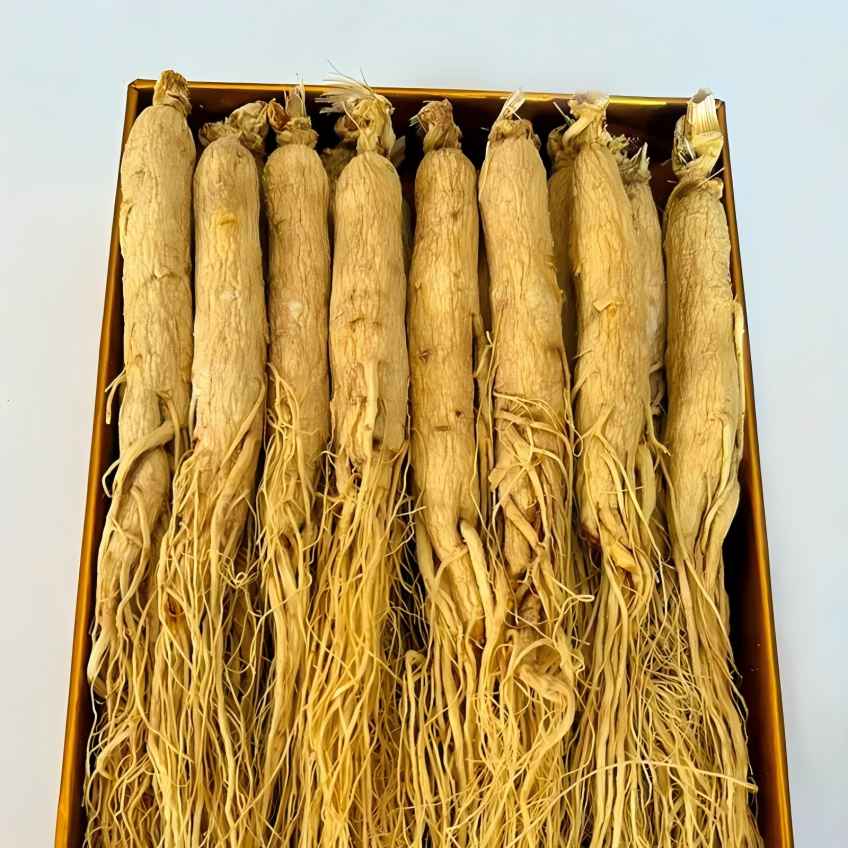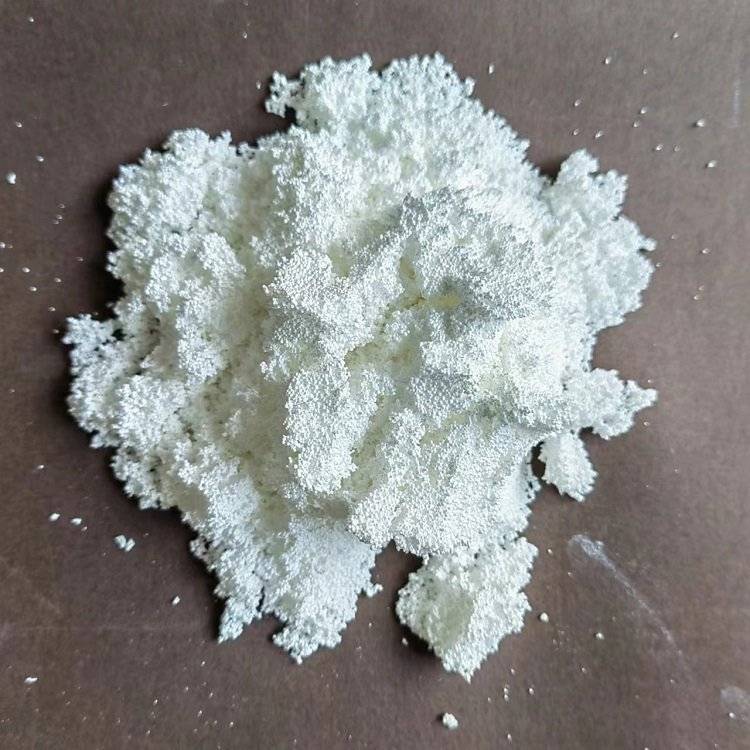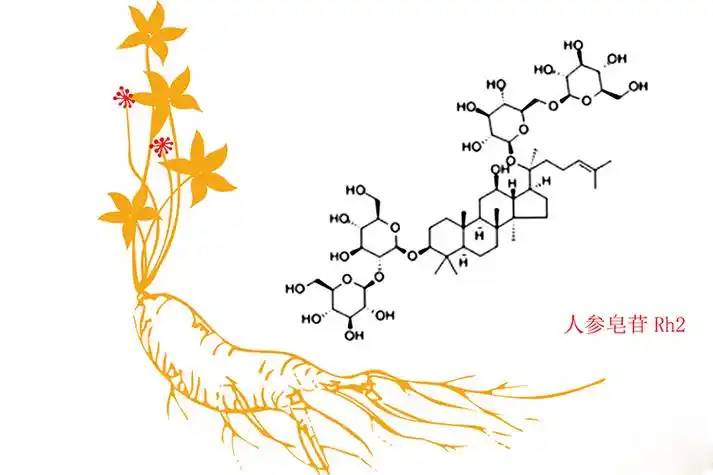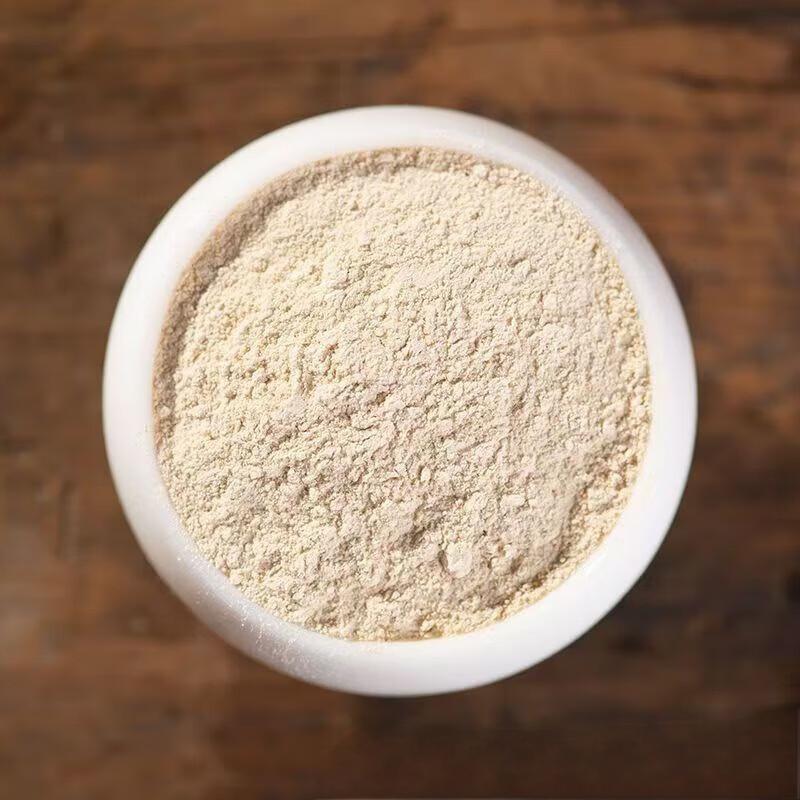人参エキスからジンセノシドを分離するには?
人参 is the dried root of the plant Panax ginseng C。A. Mey, which is mainly produced in the Changbai Mountains of Jilin, Liaoning, Heilongjiang, Hebei, Shanxi and other places in China. It is a traditional and precious Chinese medicinal herb. Modern research has shown that more than 40 ginsenoside monomers have been isolated and identified in ginseng, followed by ginseng polysaccharides, amino acids, proteins, ginseng diol, ginsenoside, and other active ingredients. Among these, ginsenosides are one of the main active ingredients in ginseng, and have pharmacological activities such as protecting heart function, lowering blood sugar, anti-oxidation, anti-fatigue, and anti-tumor [1-3]. Selecting a reasonable extraction and separation method to obtain high-quality ginsenosides has become a research hotspot.
文献報告書[4-5]によると、煎薬、パーコレーション、ソックスレット抽出、カラムクロマトグラフィーなどの伝統的な抽出・分離方法は、伝統的な中医学の医薬産業の発展に重要な役割を果たしてきた。しかし、これらの方法はいずれも、抽出サイクルが長い、有効成分の損失が大きい、抽出効率が低いなど、さまざまな程度の問題を抱えています。現代科学技術の継続的な発展に伴い、超臨界二酸化炭素抽出技術、マイクロ波支援抽出技術、超音波抽出技術など、多くの新しい抽出・分離技術が登場している[6-7]。これらの技術の使用は、生産コストを削減するだけでなく、収量を向上させ、高麗人参の工業化、精密化、自動化のための技術指導を提供します。

1抽出法
多くの問題を解決するためにextraction of ginseng, in recent years, research on new techniques for extracting traditional Chinese medicine has been very active in China, and considerable progress has been made. These techniques not only extract the maximum amount of ginsenosides from ginseng, but also avoid problems such as the loss of ginsenosides and the dissolution of inactive ingredients.
1.1マイクロ波抽出法
マイクロ波抽出は設備が簡単で、時間が節約でき、抽出率が高く、投資が少なく、溶剤が節約でき、汚染が少ないという利点がある。liu yonglianらは、米人参の乾燥根からマイクロ波抽出法を用いてギンセノシドを抽出した。その結果、ギンセノシドの収率は5.53%と高く、エタノール還元抽出より29%高く、抽出時間はエタノール還元抽出の2%であった。
別の実験[9]では、マイクロ波抽出によるギンセノシドの抽出率は8%であり、従来の逆流法の2.67倍であることが確認された。zhang jingら[10]は、従来の逆流法の1.67倍である5.25%の抽出速度で、マイクロ波抽出法を用いてギンセノシドを抽出した。song yahui[11]等がマイクロ波抽出法を用いてギンセノシドを抽出した結果、この方法によるギンセノシドの抽出率は約8%であったのに対し、逆流法では3.27%であった。マイクロ波抽出は、熱安定性のある製品にのみ適していることは注目に値する。熱に敏感な物質の場合、マイクロ波加熱はこれらの成分の変性または不活性化につながる可能性があります。
1.2超音波抽出法
超音波抽出法は、少量の溶媒を使用し、抽出効率が高く、ギンセノシドの活性に影響を与えません。ji xiaohui[12]らが超音波抽出法を用いて米人参の茎や葉からginsenoside reを抽出したところ、抽出率は2.77%で、従来の水抽出法の約1.2倍であった。zheng yi[13]らは超音波法を用いてギンセノドを抽出した。抽出率は8.13%で、従来の抽出法の5.01%よりもはるかに高い。。[14]金大明寺他人で使用されている超音波のginsenosidesを抽出方法、中央合成を使って設計最適な抽出条件決定方法:エタノール濃度64%、超音波時間108min溶剤比率26mL / g .総人参■サポニン抽出金利このような状況のなかでは年間5.23%で、が確認されこの方法の利点は、高い抽出率伝統技法などに比して低エネルギー消費量である。
1.3超臨界流体抽出法
超臨界流体抽出技術は、無毒で残留溶剤を使用せず、低コストで省エネルギーな新しい抽出法です。zhang le[15]は、超臨界流体抽出技術を用いて、極性が低いためギンセノシドを抽出した。その結果、ギンセノシドの抽出率は約2.76%で、従来の逆流抽出法(3.26%)よりもわずかに低かった。極性の高いサポニンを抽出することは困難ですが、極性の低い希少なサポニンを抽出する際に、汚染が少なく溶媒残渣がないという利点があり、従来の還流法とは比較にならない環境に優しい方法です。
jiang xiaoqing[16]らは、超臨界流体抽出技術を用いて抽出を行ったginsenosides Rh1 and Rh2 from ginsenosides. The results showed that the yields of ginsenosides Rh1 and Rh2 were 7.33% and 14.69%, respectively, which were higher than those of the traditional reflux extraction method. Another experiment proved [17] that after a specific surfactant was introduced into the extraction system, the extraction rate of ginsenosides reached 15.9%, which is 13.3 times higher than that without the addition of surfactant. Although this technology has the advantages of low-temperature operation, rapidity and environmental protection, it has problems such as high equipment investment, high production costs and safety. Therefore, attention should be paid to these problems when promoting and applying the method.

1.4酵素抽出法
Enzyme hydrolysis is a new technology used in recent years for the extraction of active ingredients from natural plants. The use of the right enzyme can gently break down plant tissue, accelerate the release of active ingredients, and thereby increase the extraction rate [18]. Zhang Ying [19] and others have demonstrated that the extraction of ginseng after treatment with laccase from the basidiomycete Trametes versicolor can significantly increase the extraction rate of total ginsenosides. This method improves the extraction rate by 65.31% compared to water extraction. Wang Ye [20] and others found that the enzymatic hydrolysis of lac enzyme increased the extraction rate of ginsenoside Re to 0.511%, which was 90.0% higher than the traditional heating reflux method. Wu Qing [21] and others used the cellulase method to extract ginsenosides from ginseng leaves and found that the ginsenoside extraction rate was as high as 6.29%. Although the enzymatic extraction method has the advantages of high catalytic efficiency and mild catalytic conditions, this technology has high requirements for enzymes and production conditions. Therefore, in future research work, it is necessary to strengthen the control of the generated products and establish the screening of special active enzymes.
1.5バイオミメティック抽出法
bionic extraction[22]は、phの異なる酸性水とアルカリ性水を使用して、人間の消化管の消化と操作をシミュレートし、バイオニックエキスを得るために順番に抽出します。ginsenosidesの抽出はでは、主としての原則に基づいて、「好きなはよう溶ける」であり、条件は整っ抽出溶剤」と一線を画しているように生理条件で—ヒトの消化器系について、サポニン成分は一般的に有効体外ででもは无効になるかつてそれら体内に入るとた。この現象に基づき、chen xin[23]は、バイオミメティクス溶媒と水を抽出溶媒としてジンセノシドを抽出し、バイオミミクリ抽出したジンセノシドの収率は61.31%で、水抽出法の収率54.26%よりも高いことを確認した。この方法は抽出速度が速く、生産サイクルが短く、伝統的な漢方薬の本来の機能を変更しないという特徴があるが、現在のところ熱に敏感な有効成分に一定の影響を与える熱抽出法である。したがって、この技術を使用する際には、一部の熱に敏感な有効成分の保護に注意する必要があります。
1.6他の方法
In recent years, due to the rapid development of ginsenoside extraction technology, many techniques have emerged in addition to the above extraction techniques. For example, the two-phase extraction method: it is a new extraction technique that uses the difference in the distribution of substances in two phases for extraction. Zhang Ru et al. [24] used the two-phase extraction method to extract ginsenosides from ginseng roots, and found that the recovery rate of ginsenosides in this system was higher than that of the traditional extraction method. Maceration method: Since ginsenosides are highly soluble in water, they can be extracted from all ginseng saponins. Zhang Chunhong [25] et al. used the maceration method to extract ginsenosides with an extraction rate of 8.33%.
別の実験[26]では、浸漬法を用いて高麗人参を48時間浸漬した後、ginsenosides rb1、rg1、reの抽出率はそれぞれ2.906%、0.2450%、1.3420%であった。逆流法:wu zhengzhong[27]らは逆流法を用いてギンセノシドを抽出した。総ギンセノシド抽出率は5.52%、総ギンセノシドrg1およびre抽出率は0.2473%で、従来のマセレーション法よりも高い。高圧抽出法:陳瑞山[28]らが高圧抽出法で高麗人参からジンセオイドを抽出した結果、高圧抽出法で抽出したジンセオイドの収率は7.76%で、従来の抽出法よりはるかに高かった。
2. モノマーを分離して精製する方法
高麗人参サポニンは化学的に不安定であり、酵素や酸性条件の存在下で容易に加水分解される。現在、高麗人参サポニンのモノマーを分離・精製する方法には、マクロ多孔質吸着樹脂を用いた分離・精製法、高速逆流クロマトグラフィー分離法、泡浮遊分離法などがある。これらの方法は、高い分離精製、良好な分離効果と高速の利点を持ち、幅広い応用の見通しを持っています。
2.1マクロ多孔質吸着樹脂分離精製法
xie liling[29]らは、マクロ多孔質吸着樹脂による高麗人参総サポニンの精製過程を調べたところ、マクロ多孔質樹脂による分離精製後に得られたギンセノシドrg1、re、rb1の全抽出率が0.989%であった。また、弱極性の多孔性樹脂を用いて抽出したギンセノシドの純度は60%以上に達することも報告[30]されています。cai xiong[31]らは、大多孔性樹脂を用いた濃縮精製後のギンセノシドの溶出率が90%以上であることを確認した。liu jihua[32]らは、米国の高麗人参の果肉からマクロ多孔質の吸着樹脂を使用して総ジンセノシドを抽出したところ、総ジンセノシド含有量が50%を超えたことを確認した。sun chengpeng[33]らは、高麗人参の根から全ギンセノシドを分離・精製するために、d101cという多孔質吸着樹脂を用い、分離純度は94.62%に達した。この方法は分離純度が高いものの、用途には限界があり、分離対象は主にサポニンやアルカロイドなどの成分に集中していました。適用にあたっては、樹脂残渣や割れ製品の検出方法を確立し、合理的な限度基準を策定する必要があります。

2.2高速逆電流クロマトグラフィー分離法
高速逆電流クロマトグラフィーは、近年開発された新しい分離技術です。サンプルの90%以上を分離することができます。調製量が多く、分離効果が良好で、速度が速いという利点があります。zhang min[34]らは、re、rg1、rg3の3つのギンセノシド単量体化合物を高速逆電流クロマトグラフィーを用いて分離し、hplcによって95%以上の純度が検出された。また、ある文献報告[35]によると、ギンセノシドrg1、rf、rdは同じ方法で調製され、純度はhplcによってそれぞれ96.2%、94.3%、95.1%であった。この結果、高速逆電流クロマトグラフィーは、従来のカラムクロマトグラフィーよりも簡便かつ高速であり、実用価値が高いことが確認されました。
2.3泡浮選分離法
The foam flotation separation method is a technique that uses the difference in adsorption of substances on the surface of bubbles to separate and purify. It has the characteristics of high enrichment and no need for organic solvents. Wang Yutang [36] and others used dynamic foam flotation to separate and enrich diol-type ginsenosides in ginseng water extract. The results showed that the enrichment efficiency of dynamic foam flotation for ginsenosides Rb1, Rc, Rb2 and Rd was better than that of other methods, with recovery rates of 93.3%, 98.6%, 96.9% and 98.3%, respectively. The presence of surface-active ingredients in the solution is one of the necessary conditions for foam separation. Ginseng saponins have surface-active properties, and can produce stable foam when stirred or aerated, which makes ginseng water extract suitable for foam separation [37]. It can be seen that the use of foam flotation separation can also effectively increase the enrichment factor of ginseng saponins and improve the yield of ginseng saponins.
3. 複数の技術の組み合わせ
近代的な抽出と分離技術の急速な発展に伴い、複数の技術を組み合わせて使用することは人参産業に徐々に浸透しています。技術の組み合わせは、高麗人参エキスの特徴をターゲットにすることができ、技術の組み合わせは、統合された方法でそれぞれの利点を十分に発揮し、お互いを補完することができます#39の欠陥、およびそれぞれのアプリケーションスコープを展開します。これにより、より少ないエネルギー消費でより速い速度でより高い収率のギンセノシドを短時間で抽出することが可能となり、幅広い応用の見通しがあります。
3.1超音波強化超臨界流体抽出法
Ultrasonic-enhanced supercritical fluid extraction technology is a combined technology that enhances the ability of supercritical fluid extraction to separate effective substances in traditional Chinese medicine through an ultrasonic field. This technology has the characteristics of reducing extraction pressure and temperature, shortening extraction time, reducing energy consumption, reducing fluid flow, and high extraction rate. Luo et al. [38] used ultrasonic-enhanced supercritical fluid extraction to extract ginsenosides and analyzed the extraction rate of ginsenosides before and after the addition of ultrasound. The results showed that the extraction rate of ginsenosides was 8.06% before the addition of ultrasound. Under the optimized conditions after the addition of ultrasound, the ginsenoside extraction rate reached 13.20%. It can be seen that the addition of ultrasound can significantly improve the extraction rate and production efficiency of supercritical CO2 extraction of ginsenosides.
3.2超音波シリカゲルカラムクロマトグラフィー
wang lele[39]らは、超音波シリカゲルカラムクロマトグラフィー技術を組み合わせてギンセノシドrg1を分離・精製した。その結果、この方法で高麗人参50 gを分離し、89.63%の純度で約9.91 gのギンセノシドrg1が得られることを確認した。この方法は正確で低コストであり、得られる生成物の純度が高い。そして、高品質のギンセノシドrg1を得るための有効な方法として使用することができます。この方法は、超音波法の特長である操作が簡単で、時間が短く、収率が高いだけでなく、ギンセノサイドモノマーをさらに分離・精製し、純度を向上させる従来のシリカゲルカラムクロマトグラフィー法の利点も保持しています。したがって、超音波シリカゲルカラムクロマトグラフィー技術の組み合わせは、ギンセノシドの収率と純度を向上させる効果的な方法でもあります。
3.3マクロ多孔質吸着レジンシリカゲルカラムクロマトグラフィー
In order to obtain ginsenoside Rd, Wang Yan [40] and others used macroporous adsorption resin technology to extract total ginsenosides from 1 g of ginseng, and then separated ginsenoside diol to obtain ginsenoside Rd. The ginsenoside diol was then separated using silica gel column chromatography to obtain relatively pure ginsenoside Rd. The result was relatively pure ginsenoside Rd 500 mg, with a yield of 50% and a purity of 98%. This method takes advantage of the characteristics of the two methods for ginseng extract, and combines the two methods in an integrated manner to give full play to their respective advantages, complement each other'の欠陥は、それぞれのアプリケーションスコープを展開し、ギンセノシドの純度を向上させます。
4結論
Ginsenosides are one of the main active ingredients in ginseng,良好な薬理活性と臨床薬効を有する。市場の需要が大きいため、高品質の銀セノシドをいかに効率よく抽出するかが重要視されています。近年、伝統的な中国医学の分野での新技術の継続的な導入と開発に伴い、ジンセノシドの抽出と分離でいくつかの成果を達成しています。本論文では,一般的に用いられる高麗人参からのギンセノド抽出法を比較する。これらの新技術には、ターゲットを絞った高収率で、原料ロスが少なく、エネルギー消費が少ないという利点があることが示されています。
しかし、彼ら自身の限界もあります。様々な抽出方法が銀セノシドの粗抽出に焦点を当てており、抽出された銀セノシドの純度は高くない。モノマーを分離精製する方法は、上記の抽出方法の欠点を補うことができる。しかし、どのような方法でギンセノシドを抽出・分離しても純度を最大化することはできません。唯一の統合された方法で技術を組み合わせることによって、それぞれの利点を十分に発揮し、お互いを補完する'の欠陥は、それぞれの適用と効果の範囲を拡大することができます。現在の研究から、複数の技術を組み合わせて使用することは、主に実験室での研究段階にあります。高麗人参の原料生産に応用するためには、解決しなければならない技術的課題が多い。研究機関と企業が力を合わせて高麗人参の本質的な品質を高め、新技術を絶えず探求・開発し、高麗人参の生産に広く活用し、高麗人参産業の現代化に役割を果たすようにしなければならない。

参照
一石二鳥です鳳岩。[1]高麗人参の薬理作用と臨床応用に関する研究の進展[j]。中国医学臨床研究,2013,5(6):121-122。
【2】何道通、王兵、陳俊明。ギンセノシドの薬理作用に関する研究の進展[j]。中国中医薬研究院紀要,2012,14(7):118-120。
【3】楊秋雅、李暁雨、劉高林。ギンセノシドrb1の薬理作用に関する研究の進展[j]。^中国医薬ジャーナル、2013年、48(15):1233-1236。
[4] zhang chunhong, zhang lianxue, li xiangao, et al。従来の水抽出法と人参サポニン抽出法の比較研究[j]。^ a b c d e f g h『仙台市史』(2006年)、1029 -1042頁。【5】楊礼玲、呉鉄。浸漬法による人参サポニン抽出の最適浸漬時間の検討[j]。『中国伝統医学研究紀要』雲南大学、2009年、32(5):39-41。
[6] zhang wei, li qianqian, cong jingxiang, et al。全ギンセノシドおよびギンセノシドrb1の抽出過程に関する研究[j]。安徽農業科学,2010,38(39):16218。
[7] shi xialei, yongri jin, liu jingbo, et al。チョウセンニンジンの葉中のギンセノシドのマトリックス固相分散抽出c . m . mey [j]。2011年食品化学、129(3):1253-1257。
[8] liu yonglian, zheng cheng, mao taoyan, et al。高麗人参の有効成分のマイクロ波抽出に関する研究[j]。^『仙台市史』通史館、2006年(平成18年)5月6日、52-55頁。
[9] mao zulin, li xiaobo, gong wenming, et al。ギンセノシドの抽出プロセスの最適化[j]。2008年セ漢方医、19(11):2762-2763。
[10] zhang jing, chen quancheng, gong xiaojie, et al。抽出方法の違いがギンセノシドの抽出速度に与える影響[j]。^『金沢市史』第25巻第1号、1971年、71-73頁。
【11】宋亜輝、姜暁軍。高麗人参サポニンの抽出過程に関する研究[j]。黒竜江省科学技術情報、2009年、31:240。
[12]吉自。。米国人参の茎・葉からの超音波抽出プロセスの最適化[j]。2013年農業科学湖北、52(13):3137-3139。
[13] zheng y, lu h .高麗人参総サポニン抽出プロセスの最適化[j]。金陵技術研究所,2008,24(2):89-91。
[14] jin d, wu j, zhao y, et al。高麗人参からの全サポニンの超音波抽出プロセスを最適化するための複合設計応答表面解析法[j]。シジン伝統中国医学,2012,23(9):2148-2150。
[15] zhang le, song fengrui, wang qi, et al。高麗人参からの希少なギンセノシドの超臨界二酸化炭素抽出[j]。応用化学,2010,27(12):1483-1485。
[16] jiang xiaoqing, wei fuxiang, zhang nan, et al。超臨界co2によるギンセノシドrh1およびギンセノシドrh2のグリーン抽出に関する研究[j]。日本学術振興会編『日本学術振興会史』第33巻第4号、日本学術振興会、2012年、54 -54頁。
[17] luo denglin, luo lei, liu jianxue, et al。超臨界co2による高麗人参サポニン抽出に対する界面活性剤の影響[j]。中国農業工学会論文集,2009,25(1):204-206。
[18] liu lei, zhu xue-mei, wang qi-jun, et al。黒参からの20(s, r)- rg3の形質転換による20(s, r)-プロトパナキサジオールの酵素調製[j]。^「phytochemistry, 2010, 71(13): 1514-1520」。phytochemistry(2010年). 2010年7月13日閲覧。
[19] zhao xiaohu, zhang hongmei, yang jinwei, et al。直交実験を用いた人参のギンセノシドrg1の酵素加水分解最適化に関する研究[j]。中国漢方薬,2010,41(8):1279-1282。
[20]張さくら。ギンセノシドの抽出のための担子菌ラカーゼの使用に関する研究[j]。黒竜江省科学技術情報、2011年、36:2-3。
【21位】王曄、沈明浩。担子菌ラカーゼによるギンセノシドre抽出法の研究[j]。^『農林水産業の歴史』農林水産業協会、2012年、6 -8頁。
[22] wu qing, ni ning, wang yurong, et al。実験応答表面法の設計を用いた高麗人参の酵素抽出プロセスの最適化[j]。chinese journal of experimental therapeutics, 2006, 12(4): 5-8。
[23] chen xin, hu chaoqi, zhang hongchang, et al。模擬生化学的方法によるジンセノシドの抽出に関する予備的研究[j]。中国薬局(中国語),2012,23(19):1751-1754。
[24] zhang ru, zhang bianling, xie tao, et al。2相システムによる人参の根からのギンセノシドの抽出に関する研究[j]。^『官報』第2424号、大正12年、169 - 169頁。
[25] zhang chunhong, zhang chongxi, zheng youlan, et al。マセレーションによるギンセノシド抽出の最適プロセスに関する研究[j]。吉林農業大学紀要,2003,25(1):73-74,78。
[26] yang liling、wu tie。マセレーション法によるジンセノシド抽出の最適浸漬時間の検討[j]。『中国の伝統医学』中国雲南学院、2009年、32(5):39-41。【27】呉正中、周国明、謝玉瓊。直交実験によるギンセノシドの抽出過程に関する研究[j]。中国の薬局,2002,13(1):18-19。
【28】陳瑞山、張守琴、王長正。直交実験を用いた超高圧抽出法による人参からギンセノシド抽出法の最適化に関する研究[j]。中国の漢方薬,2005,36(3):365-368。
[29] xie liling, ren li, lai xiansheng, et al。紅参からの全ギンセノシスの抽出・精製過程に関する研究[j]。^ a b「traditional chinese medicine materials, 2009, 32(10): 1602—1605」。traditional chinese medicine materials . 2009年10月22日閲覧。
[30] yao h, wan y, shen y, et al。マクロポーラス吸着樹脂によるギンセノシドの精製に関する研究。世界の伝統的な中国医学,2013,6(2):84-86。
[31] cai xiong, liu zhongqiu, wang peixun, et al。高分子吸着樹脂による高麗人参総サポニンの精製プロセス[j]。^ a b c d e f g hi『中国史』第23巻第9号、633 -633頁。
[32] liu jihua, zhu tao, lu dan, et al。マクロポーラス吸着樹脂[j]を用いた米国人参パルプからの全ギンセノシド抽出。吉林大学紀要(医学),2004,30(5):819-820。
[33] sun chengpeng, gao weiping, zhao baozhong, et al。マクロポーラス吸着樹脂d101cを用いた高麗人参からの全ギンセノシドの分離精製に関する研究[j]。^『日本近代史研究』日本近代史研究会、2013年(平成25年)、90-95頁。
[34] zhang min, chen ruizhan, dou jianpeng, et al。高速逆電流クロマトグラフィーによる人参中銀セノシドの分離[j]。国立医学院,2012,23(2):402-405。
[35] cheng yijun, liang qionglin, wang yiming, et al。ジンセノシドrg1, rf, rdの溶離・逆電流クロマトグラフィーによる効率的な分離・調製[j]。^ a b c d e f g h『中国の歴史』第1巻、2012年、89- 89頁。
[36] wang yutang, liu xuebo, yue tianli, et al。動的泡浮選法による人参エキス中のジオール型ギンセノシドの分離と濃縮[j]。^「journal of chemical sciences in colleges and universities」。journal of chemical sciences in colleges and universities(2009年). 2018年3月30日閲覧。
[37] enrique riera, alfonso blanco, jose garcia, et al。超臨界co2抽出プロセスにおける物質移動効率向上のための高出力超音波装置[j]。^ a b c d e f『仙台市史』第2巻、309 -309頁。
[38] luo d l, nie y, zhong x f, et al。ギンセノシドの超音波超臨界co2抽出に関する研究[j]。中国農業工学会論文集,2007,23(6):256-258。
[39] wang l l, dong z, liu y, et al。ギンセノシドrg1の抽出・精製とその含有量決定[j]。中国の薬局,2013,24(7):605-607。
[40] wang yan, yu xiaoxi, wu di, et al。ginsenoside rd [j]の分離と精製。『大連軽工業院報』2007年、26(4):294-296。


 英語
英語 フランス
フランス スペイン
スペイン ロシア
ロシア 韓国
韓国 日本
日本




